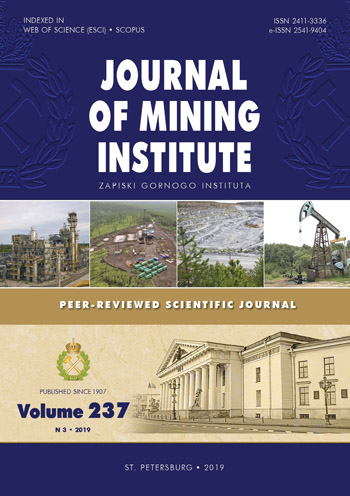Modeling of the welding process of flat sheet parts by an explosion
- 1 — Ph.D. associate professor Saint-Petersburg Mining University
- 2 — Ph.D. associate professor Saint-Petersburg Mining University
- 3 — Ph.D. associate professor Saint-Petersburg Mining University
Abstract
The list of materials subject to explosive welding is very extensive and amounts to several hundred combinations of various alloys and metals, and the variety of explosive welding schemes has more than a thousand options. In almost all technical solutions, the process involves the sequential creation of physical contact of the materials to be welded and their connection due to plastic deformation of the contacting surfaces. The strength of such a connection depends on the mode of the welding process. With the correct selection of the parameters of the mode, it is possible to obtain a high-quality connection of the required strength. However, the experimental selection of such options is a very laborious and costly process. Computer simulation and application of mathematical models for solving dynamic problems of explosion mechanics simplifies the search for optimal parameters and allows to predict the expected result in the shortest possible time. The article discusses the issues of modeling of explosive welding of metals, calculations related to the parameters of the process of formation of the weld using the Ansys Autodyn software package. A model is presented for analyzing the deformation process of explosion welding of a plate and its connection with a matrix. The main parameters of explosion welding (velocity, pressure, time) are determined. The adequacy of the obtained values was evaluated in the systems aluminum – copper and copper – steel. It also provides a comparative analysis of simulation results and field experiments. Based on numerical calculations, a conclusion was substantiated on the suitability of the model obtained for a preliminary analysis of the main welding parameters at the preparatory stage.
